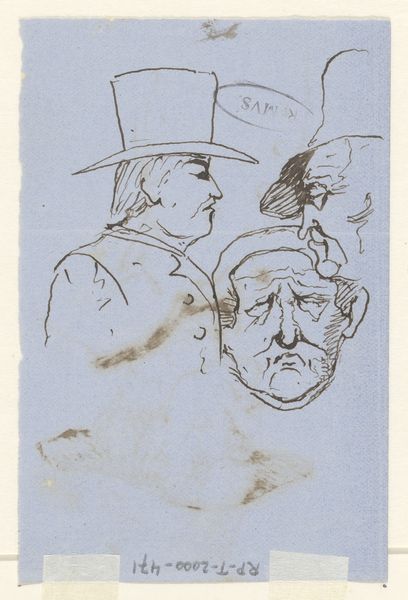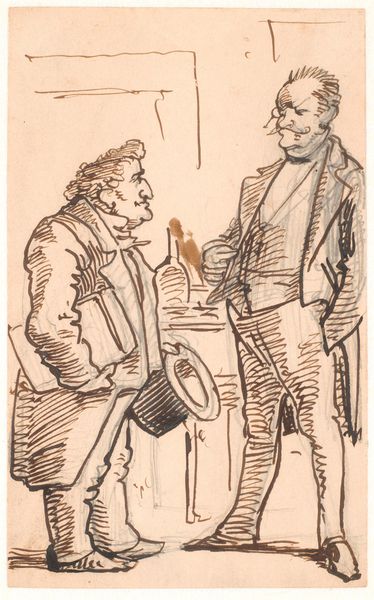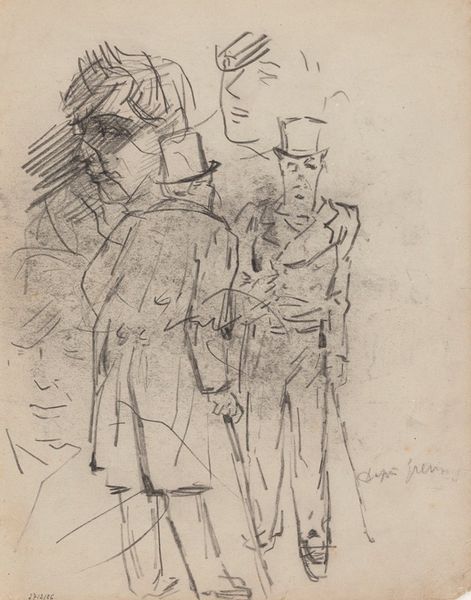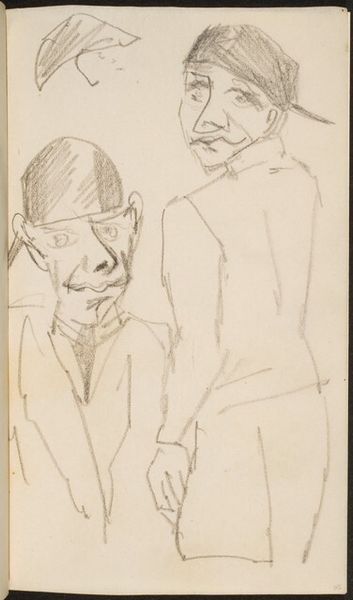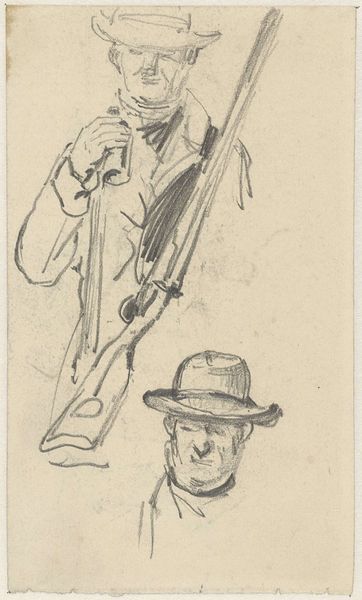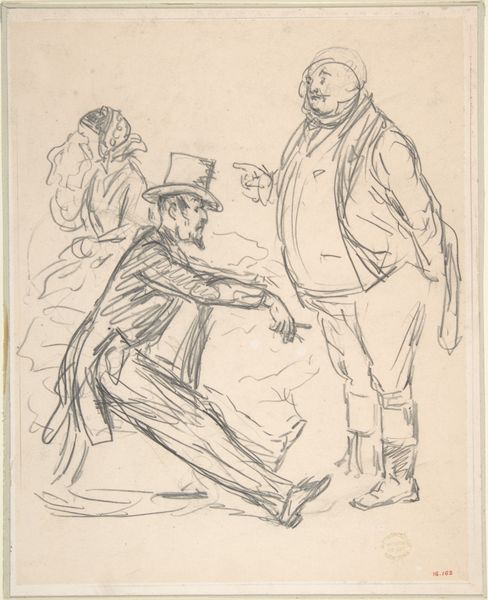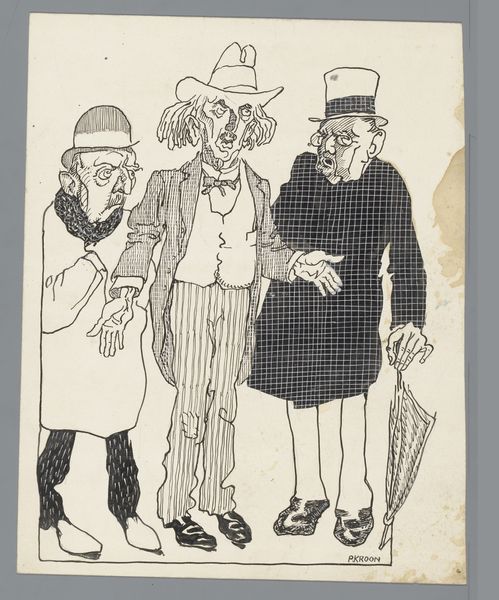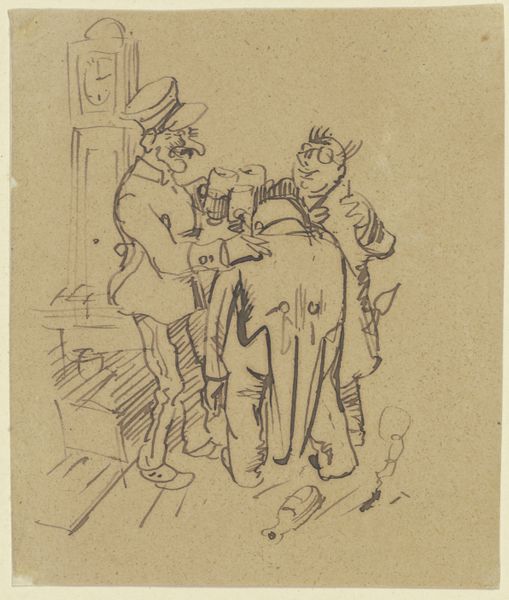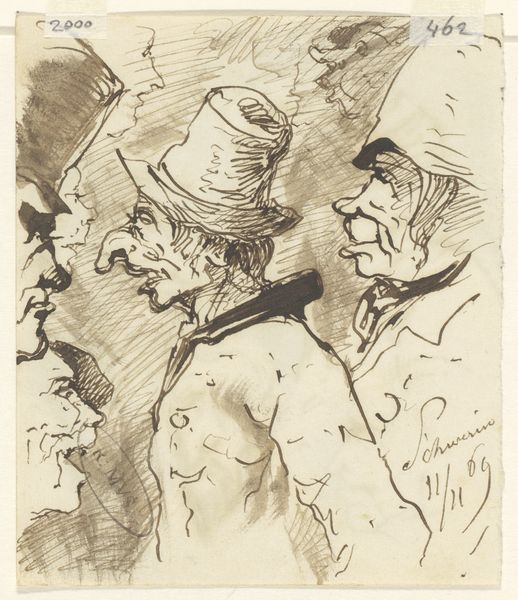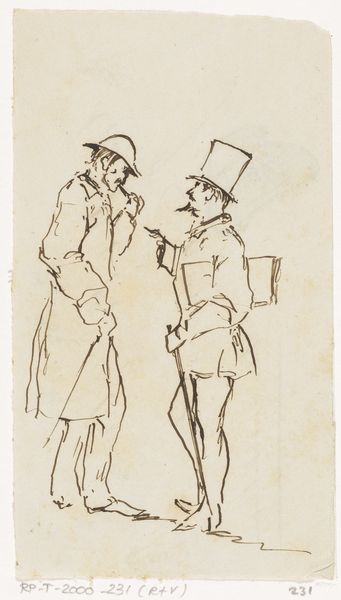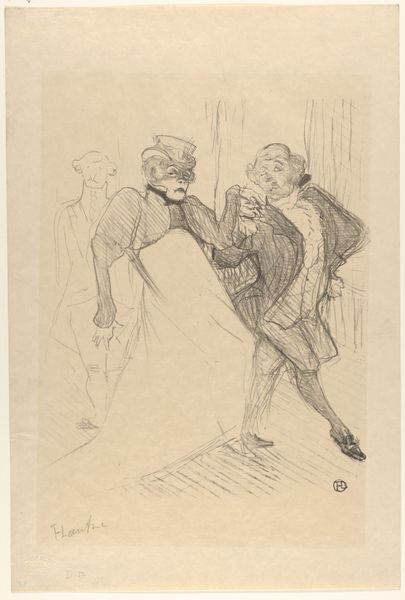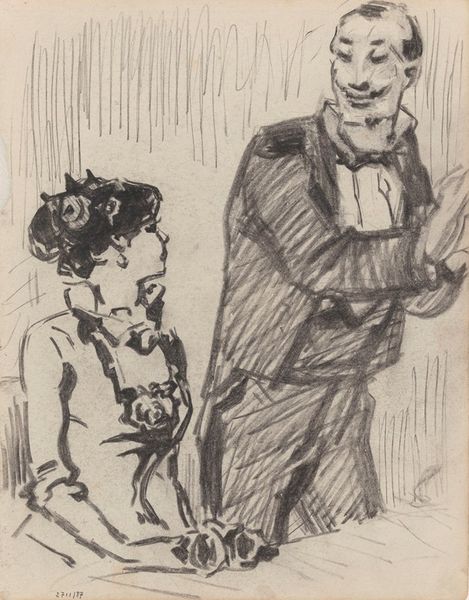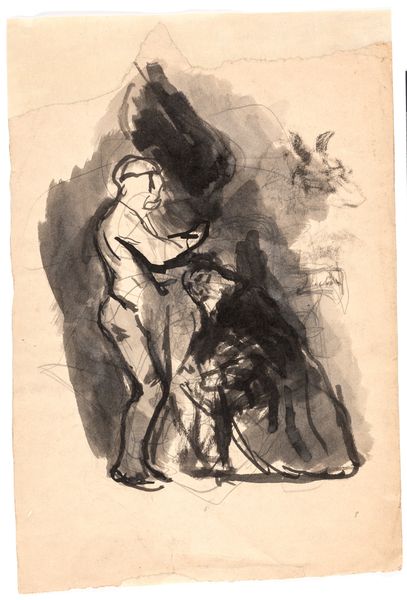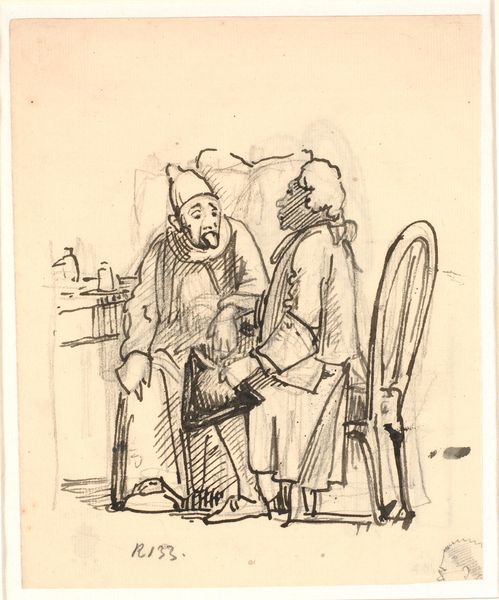
drawing, ink, pen
#
portrait
#
drawing
#
imaginative character sketch
#
quirky sketch
#
caricature
#
cartoon sketch
#
figuration
#
personal sketchbook
#
ink
#
ink drawing experimentation
#
geometric
#
pen-ink sketch
#
sketchbook drawing
#
pen
#
watercolour illustration
#
genre-painting
#
storyboard and sketchbook work
#
sketchbook art
#
modernism
Dimensions: height 324 mm, width 248 mm
Copyright: Rijks Museum: Open Domain
Editor: Look at this, a drawing titled "Twee politici" from the period 1900-1935, attributed to Patricq Kroon. It's executed in ink, pen, and what looks like watercolour. What's your initial read? Curator: There's an immediate sense of imbalance created by the caricature and differing volumes, isn’t there? The disproportionate scale between the two figures, the aggressive lines – it all contributes to an impression of skewed authority. Editor: Absolutely. And the materials contribute so much. The varying densities of ink give weight and substance to these "politici", contrasting with the almost skeletal structure of the cane and quick sketch of figures in the background. How do you read the technique here? Curator: The stark black and white lends itself to an interplay between line and form, a conscious engagement with pictorial space, certainly, although with a deliberately unsettling effect achieved via distortion. Observe how the rapid lines suggest immediacy. Editor: Immediacy yes, but also perhaps speaks to Kroon’s process. One can see a bit of that layered production – that skeletal drawing in the back looks like previous figures. Perhaps abandoned forms, but re-incorporated here to provide visual and material depth, so to speak. What sort of labour was involved? What narratives of material processes were intentionally deployed? Curator: Fascinating points. Beyond the physicality of the mark-making, I would say the figures themselves—their rendered status—offer an important avenue into considering systems of power. We have one bedecked in what appears to be a uniform of some kind, his gaze direct, which positions the viewer in relation to authority. And the other. Editor: Who seems to represent perhaps the embodiment of old political power. His bulk gives him, quite literally, symbolic weight and materiality in that relationship you describe, and perhaps hints at the slow, viscous labour often associated with such institutions. But where does one begin to assess its aesthetic power or lasting social value in this period of Modernism? Curator: We find this in the manipulation of form and contrast, in the calculated disruptions of spatial harmony, which destabilise any singular reading and, importantly, generate ongoing, if not always harmonious, intellectual engagement. Editor: I see that, and appreciate that it is still possible to have new kinds of engagement here by assessing its layered construction—techniques that ultimately destabilize hierarchical artistic mediums of drawing. It reveals some enduring elements concerning the machinations of politics, or labour— or artistic media and practices, I might add.
Comments
No comments
Be the first to comment and join the conversation on the ultimate creative platform.
